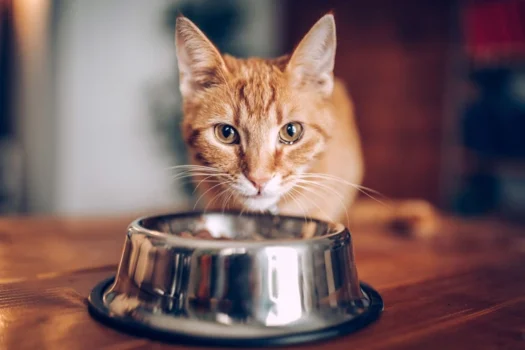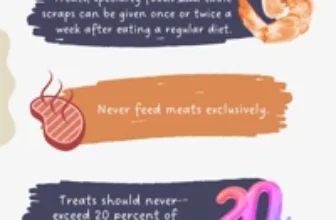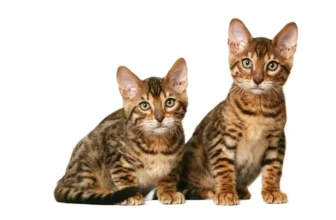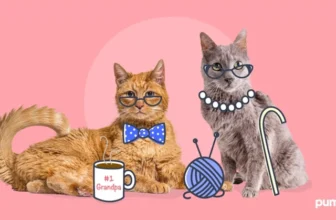As a cat owner, you want nothing but the best for your furry friend. When it comes to their diet, you may have considered making their food at home. While it can offer several benefits, it also comes with its own set of challenges. In this article, we will explore the pros and cons of homemade cat food for your California Spangled. We will also discuss recommended ingredients and preparation methods, so you can make the best decision for your feline companion’s health and well-being. So, grab a cup of tea, sit back, and let’s dive in.
Pros of Homemade Cat Food
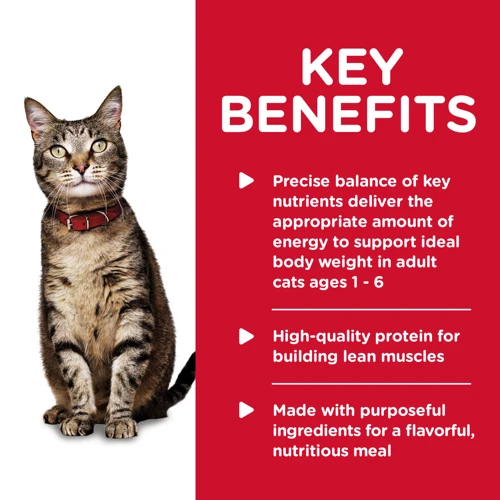
As a California Spangled owner, you want to make sure your cat is receiving the best nutrition possible. One potential option is homemade cat food. Making cat food at home has several advantages that might appeal to you. From greater control over ingredients to potential cost savings, there are many factors to consider when deciding whether to try homemade cat food. However, it’s important to weigh these benefits against the potential drawbacks. Let’s take a closer look at the pros of homemade cat food and determine whether this option is worth pursuing for your furry friend.
Control over Ingredients
When making homemade cat food for your California Spangled, you can have full control over the ingredients that go into your cat’s diet. This provides peace of mind for cat owners who are concerned about the quality of commercial cat food. By selecting the ingredients yourself, you can ensure that your cat is getting the nutrients it needs and avoiding any ingredients that may be harmful.
To make sure your cat is getting a well-rounded diet, include a variety of ingredients in their homemade food. These include protein sources such as fish, poultry, or beef; fiber sources such as cooked pumpkin or quinoa; and carbohydrate sources such as sweet potatoes or barley. It is also important to add supplements and additions such as taurine, calcium, and vitamins to make sure their diet is balanced.
One way to keep track of the ingredients your cat is consuming is by creating an ingredient table. This table should include the name of the ingredient, the amount used, and the nutrient content. The nutrient content will vary depending on the type of ingredient, so it’s important to research each ingredient and calculate the nutrient content per serving.
| Ingredient | Amount | Nutrient Content (per serving) |
|---|---|---|
| Chicken | 1 pound | Protein – 80g |
| Brown rice | 1 cup | Carbohydrates – 45g |
| Sweet potatoes | 1 cup | Fiber – 7g, Vitamin A – 377%, Vitamin C – 65% |
| Kale | 1 cup | Fiber – 2g, Vitamin A – 206%, Vitamin C – 134% |
| Taurine supplement | 1 tsp | Taurine – 500mg |
It is important to note that creating homemade cat food does require some research and preparation. It is recommended to consult with a veterinarian or a veterinary nutritionist to make sure the homemade diet is balanced and meets all the nutritional needs of your California Spangled. This will also help to prevent any nutritional deficiencies in your cat’s diet.
To learn more about the nutrition needs of California Spangled cats, check out our article on cat food labels for California Spangled or balanced diet for California Spangled.
Customization
One of the biggest advantages of homemade cat food is the ability to customize the ingredients to meet your cat’s specific nutritional needs. Commercial cat food typically contains low-quality ingredients and fillers, which can have negative effects on your California Spangled’s health. With homemade cat food, you have complete control over what goes into your cat’s meals.
Customization means that you can choose the best protein sources, fiber sources, and carbohydrate sources for your cat’s diet. Each cat is unique and may have individual needs based on their age, weight, and activity level. Homemade cat food allows you to tailor your cat’s meals to their specific needs, which can lead to improved health and longevity.
When preparing homemade cat food, it’s important to be aware of any potential deficiencies in the California Spangled’s diet. For example, this breed is known to be deficient in certain vitamins and minerals, such as vitamin D and calcium. By doing some research or consulting with a veterinarian, you can add supplements or specific ingredients that can address these deficiencies. For more information on the nutritional needs of California Spangled cats, check out california-spangled-cats-deficiencies.
Another benefit of customization is the ability to avoid certain ingredients that may be harmful to your cat. Many commercial cat foods contain fillers, preservatives, and artificial flavors that can cause health problems in your cat. By making your cat’s food at home, you can avoid these additives and ensure that only healthy ingredients are used. For more information on the differences between a raw food diet and commercial cat food, check out raw-food-diet-vs-commercial-cat-food-ca-spangled.
Additionally, some cats may have allergies or sensitivities to certain ingredients. Homemade cat food allows you to eliminate these ingredients from your cat’s diet, which can help to alleviate any negative reactions. However, it’s important to keep in mind that creating a balanced diet for your cat requires careful consideration of all necessary nutrients. For more information on proper nutrition for California Spangled cats, check out cali-spangled-nutrition.
Homemade cat food provides the benefits of customization that can lead to improved health, longevity, and prevention of potential health issues in your furry felines.
Avoiding Fillers and Additives
When it comes to commercial cat food, it is important to read the label and avoid products that contain fillers and additives that are not nutritionally beneficial for your cat. Some of these ingredients can even be harmful to your feline friend. By making your own cat food, you have the power to ensure that only high-quality ingredients are used. You can eliminate fillers and additives altogether, avoiding the risk of exposing your cat to harmful substances.
Fillers like cornmeal, wheat, and soy often make up a significant portion of commercial cat food. While they can provide bulk and lower costs, they often have little nutritional value for your cat. Additionally, fillers can lead to weight gain, digestive problems, and allergies in some cats. By making your own cat food, you can eliminate these low-quality ingredients and focus on nourishing your cat with high-quality sources of protein, fiber, and carbohydrates.
Additives like artificial colors, flavors, and preservatives are also common in commercial cat food. These ingredients are added to make the food more appealing and extend its shelf life but can be harmful to your cat’s health in the long run. Some cats may have allergies or sensitivities to certain additives and may experience symptoms like itching, vomiting, and diarrhea. By avoiding commercial cat food and making your own, you can eliminate these additives and provide your cat with wholesome, nutritious food.
In addition to avoiding fillers and additives, making your own cat food can give you peace of mind knowing exactly what your cat is eating. You can tailor the recipe to your cat’s specific needs and preferences, ensuring that they get all the necessary nutrients for optimal health. Of course, it is important to consult with your veterinarian and do proper research before embarking on a homemade cat food diet plan.
Tip: If you want to ensure that your homemade cat food includes all the necessary vitamins and supplements, check out our article on California Spangled Cat Vitamins and Supplements for guidance.
Cost Savings
One of the significant advantages of making homemade cat food is the cost savings. Purchasing pre-packaged commercial cat food can be expensive, especially if you have multiple cats at home. By buying fresh ingredients and cooking at home, you can save money while also ensuring your California Spangled cat gets healthy and nutritious meals.
To put things in perspective, let’s take a closer look at the cost comparison between commercial cat food and homemade meals in the table below:
| Food Type | Average Cost per Serving (2/3 cup) |
|---|---|
| Commercial Dry Cat Food | $0.25 to $0.40 |
| Commercial Canned Cat Food | $0.60 to $1.20 |
| Homemade Cat Food | $0.15 to $0.30 |
As you can see from the table, making homemade cat food can be a cost-effective alternative to commercial cat food. While the cost savings can vary based on the ingredients used and portion sizes, it’s clear that making cat food at home can lead to significant long-term savings.
When you make cat food at home, you can use affordable and high-quality ingredients such as chicken, beef, or turkey meat, brown rice, or quinoa. These ingredients are not only less expensive than commercial cat foods but also offer higher nutritional value.
In addition to cost savings, making homemade cat food also ensures that you know exactly what your cat is eating. You can avoid any harmful additives or fillers present in commercial cat foods and tailor meals to your cat’s liking and nutritional requirements.
Cons of Homemade Cat Food
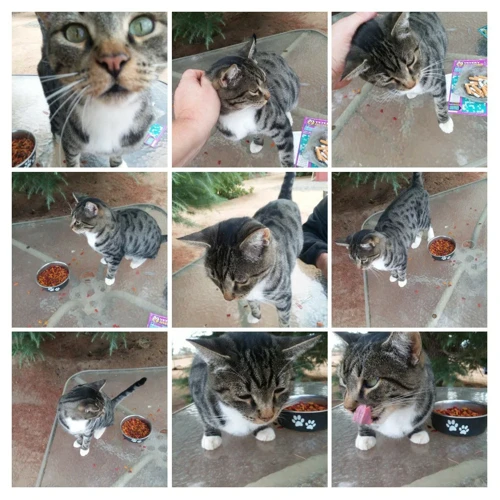
While homemade cat food offers many benefits, there are also several downsides to consider. It’s important to look at both the pros and cons before making a decision about what to feed your California Spangled. With that said, let’s explore some of the potential drawbacks of making cat food at home. Keep in mind that these cons are not meant to discourage you from homemade cat food, but rather to inform you of potential challenges. Let’s dive in.
Time-Consuming
Making homemade cat food can be a time-consuming task that requires a significant amount of preparation and effort. It involves selecting the right ingredients, carefully balancing nutrients, and preparing the food in a way that is safe and nutritious for your California Spangled. Some of the reasons why homemade cat food can be time-consuming include:
- Recipe Research: Finding recipes that meet your cat’s specific dietary needs and preferences can be a challenge. You may need to spend a considerable amount of time researching and experimenting with different recipes to find ones that work well for your pet.
- Ingredient Selection: Once you have a list of recipes, you will need to gather the correct ingredients. This might involve sourcing specialty items from multiple grocery stores or ordering them online.
- Food Preparation: After selecting the ingredients, you’ll need to prepare them in a way that is safe and nutritious for your cat. This may involve cooking, chopping, and blending ingredients to create a balanced meal.
- Cleaning: Preparing homemade cat food can also create a lot of mess, which means you’ll need to spend time cleaning up after yourself.
Despite the time commitment involved in making homemade cat food, many pet owners find it to be a rewarding experience that allows them to take control over their cat’s health and well-being. By carefully selecting ingredients and preparing everything from scratch, you can ensure that your California Spangled is getting a high-quality, nutrient-rich diet that meets their specific needs. However, it’s important to plan ahead and keep in mind that making homemade cat food can be a time-consuming process.
Nutrient Imbalance
One of the main concerns when it comes to homemade cat food is the risk of nutrient imbalance. Providing your California Spangled with an unbalanced diet can lead to a variety of health problems, including deficiencies, organ damage, and even death.
Cats require a certain balance of nutrients, including protein, fat, carbohydrates, vitamins, and minerals, in order to thrive. Without a proper balance of these nutrients, cats can experience a range of issues, such as lethargy, poor coat quality, and digestive issues.
To avoid nutrient imbalance, it’s important to carefully plan out your cat’s meals and consult with a veterinarian or animal nutritionist. Creating a nutrient-rich diet that meets all of your cat’s needs can be challenging, but it’s crucial to their overall health and wellbeing.
Below is a table of essential nutrients for cats, their recommended daily intake, and potential health problems if there’s a deficiency.
| Nutrient | Recommended Daily Intake | Health Problems from Deficiency |
|---|---|---|
| Protein | Minimum of 25% of daily caloric intake | Muscle wasting, reduced energy, poor coat quality |
| Essential Fatty Acids | 5-10% of daily caloric intake | Dull coat, poor wound healing, immune system dysfunction |
| Taurine | 500-2000mg per day | Vision and heart problems, immune system dysfunction |
| Vitamin A | 1250-5000 IU per kg of body weight per day | Poor vision, immune system dysfunction, skin and coat problems |
| Vitamin D | 175-500 IU per kg of body weight per day | Weak bones, calcium imbalance, immune system dysfunction |
| Vitamin E | 30-50 IU per kg of body weight per day | Muscle weakness, muscle and joint pain |
| Vitamin B12 | 2.2mcg per kg of body weight per day | Anemia, lethargy, poor appetite, weight loss |
| Calcium | 0.6-1.5% of dry matter intake | Weak bones, tooth decay, muscle stiffness |
| Phosphorus | 0.3-1.0% of dry matter intake | Weak bones, muscle weakness, poor appetite |
By including a variety of protein sources, fiber sources, and carbohydrate sources in your cat’s meals, and adding the necessary supplements and additions, you can work to prevent nutrient imbalance. However, it’s always best to consult with a professional to help ensure that your cat’s diet meets all of their nutritional needs.
Risk of Contamination
When it comes to preparing homemade cat food, there is always a risk of contamination. This can occur during the preparation process or when storing the food. It is important to be aware of this risk and take steps to minimize it.
Contamination Sources
Source of Contamination | How to Minimize Risk
———————–|———————–
Bacteria and pathogens in raw meat | Use high-quality, fresh meat from a trusted source and handle it properly during preparation
Cross-contamination in the kitchen | Use separate cutting boards, utensils, and storage containers for raw meat and other ingredients
Improper storage | Store homemade cat food in airtight containers and discard any leftovers after a certain amount of time
One of the biggest sources of contamination is raw meat. It is essential to use high-quality, fresh meat from a trusted source. Additionally, it is important to handle the meat properly during preparation. This means using clean utensils, cutting boards, and storage containers, and washing your hands frequently.
Cross-contamination in the kitchen is another risk. When preparing homemade cat food, it is important to use separate cutting boards, utensils, and storage containers for raw meat and other ingredients. This can help prevent the transfer of bacteria and pathogens from the meat to other ingredients.
Improper storage is also a potential source of contamination. Homemade cat food should be stored in airtight containers in the refrigerator or freezer. It is also important to discard any leftovers after a certain amount of time to prevent spoilage and the growth of harmful bacteria.
Safeguarding Against Contamination
To minimize the risk of contamination in homemade cat food, there are several steps you can take. These include:
– Using high-quality, fresh ingredients
– Handling ingredients properly during preparation
– Keeping utensils, cutting boards, and storage containers clean and separate
– Storing homemade cat food in airtight containers in the refrigerator or freezer
– Discarding any leftovers after a certain amount of time
By taking these precautions, you can help safeguard your California Spangled’s health and wellbeing while enjoying the benefits of homemade cat food.
Lack of Scientific Research
While homemade cat food has its benefits, the lack of scientific research on the topic is a major drawback. There is a limited amount of information available on what nutrients and amounts are necessary for a cat’s health. This can lead to unintentional nutrient imbalances in the food, which can lead to serious health concerns for your cat. Without proper research, it’s difficult to know what ingredients to include and how much of each ingredient to add.
Additionally, without scientific research, it’s challenging to determine the nutritional value of the food. This can make it difficult to understand if your cat is getting all the required nutrients for their age, breed, and lifestyle. Commercial cat food must meet specific nutritional standards set by regulatory agencies, but homemade cat food doesn’t have the same regulations.
There is also a lack of research on the specific nutritional needs of different breeds of cats. California Spangled cats have different nutritional needs than other breeds of cats, and without the proper research, it can be challenging to provide them with the nutrients they require. This can lead to health issues such as a dull coat, fatigue, and a weakened immune system.
While homemade cat food may sound like a great idea, the lack of scientific research surrounding it is concerning. If you decide to make your own cat food, it’s essential to speak with your veterinarian and do thorough research to ensure the food is nutritionally balanced and meets your cat’s specific needs.
Recommended Ingredients for Homemade Cat Food
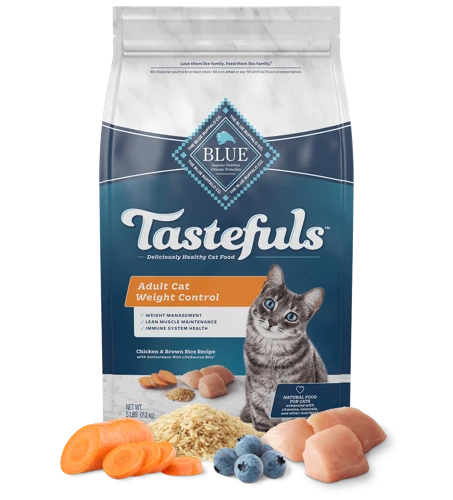
When it comes to homemade cat food, choosing the right ingredients is essential for your feline friend’s health and wellbeing. By carefully selecting the ingredients you use, you can ensure that your California Spangled is getting all the necessary nutrients to thrive. In this section, we will explore some of the recommended ingredients for homemade cat food, including protein sources, fiber sources, carbohydrate sources, and supplements and additions. Not all ingredients are created equal, so it’s important to choose wisely and consider your cat’s individual needs. Let’s dive in and discover which ingredients are best for your homemade cat food recipe.
Protein Sources
Protein is an essential nutrient for cats as it helps in maintaining their health, energy levels, and overall wellbeing. Choose quality protein sources for your California Spangled’s homemade cat food to ensure that they get the necessary nutrients to thrive. Here are some of the best protein sources that you can include in your cat’s diet:
- Chicken: Chicken is a great source of lean protein for cats. It is high in amino acids, essential for maintaining muscle mass in cats. You can use chicken breast, thighs, or even the giblets to prepare your cat’s meals.
- Beef: Beef is another excellent protein source for cats. It has high levels of taurine, an essential amino acid for cats that helps in maintaining healthy eyesight, digestion, and heart function. Use lean cuts of beef for your cat’s meals, and trim off any visible fat to reduce the risk of pancreatitis.
- Turkey: Turkey is a lean source of protein that is rich in taurine and high in essential amino acids. It is a great option for cats with food sensitivities or allergies to other protein sources.
- Fish: Fish is another excellent source of protein for cats. It is rich in omega-3 fatty acids, which are essential for maintaining healthy skin, coat, and joints. However, it is essential to note that fish should be carefully balanced with other protein sources as it can cause thiamine deficiency in cats if fed in excess.
Ensure that you rotate your cat’s protein sources to provide them with a variety of nutrients and prevent them from getting bored with their meals. Also, make sure that you cook the protein sources thoroughly to avoid the risk of bacterial contamination, especially when using raw meat.
Fiber Sources
Fiber plays a crucial role in a cat’s diet and helps promote healthy digestion. Incorporating fiber sources in homemade cat food can help ensure your feline friend is getting enough. Here are some of the top fiber sources to consider:
| Pumpkin | Peas | Oat Bran | Brown Rice |
|---|---|---|---|
| High in soluble and insoluble fiber | Rich in both soluble and insoluble fiber | High in fiber and contains important minerals like manganese and phosphorus | An easily digestible source of fiber that can also provide energy |
| Can help regulate bowel movements and prevent constipation | Can improve gut health and aid in digestion | May lower cholesterol levels and help control blood sugar | Provides essential fiber and can help maintain a healthy weight |
It is important to note that too much fiber can also cause digestive issues, so it is recommended to consult with a veterinarian or animal nutritionist before making any changes to your cat’s diet.
Carbohydrate Sources
Carbohydrates are essential sources of energy for the feline body. Some of the best carbohydrate sources for homemade cat food include:
| Carbohydrate Sources | Description |
|---|---|
| Brown Rice | A gluten-free carbohydrate option that is easily digestible. Brown rice is rich in essential nutrients including vitamin B and iron. |
| Oats | A great source of soluble fiber that supports healthy digestion and regulates blood sugar levels. Oats are a gluten-free option. |
| Barley | This grain is an excellent source of fiber, selenium, and antioxidants. It helps regulate blood sugar levels and promotes a healthy heart. |
| Sweet Potatoes | A great source of fiber, potassium, and vitamins A and C. Sweet potatoes are a low-glycemic carbohydrate option that helps regulate blood sugar levels and aids in digestion. |
| Pumpkin | Another low-glycemic carbohydrate option that is high in fiber and packed with vitamins. Pumpkin is also known for supporting urinary tract health in cats. |
It is important to note that while carbohydrates are necessary for a balanced diet, they should not make up the majority of a cat’s food. A balanced homemade cat food diet should contain approximately 10-15% carbohydrates. As always, consult with a veterinarian and do research before introducing any new foods into your cat’s diet.
Supplements and Additions
When it comes to supplements and additions, it’s important to do your research and consult with a veterinarian to ensure that your California Spangled is getting all the necessary nutrients. Here are some supplements and additions that you may consider adding to your homemade cat food:
- Vitamins and minerals: Cats require certain vitamins and minerals that may not be present in their diet. Some essential vitamins and minerals include vitamin D, vitamin E, calcium, and taurine. You can add these nutrients in supplement form or through food sources such as liver or egg yolks.
- Omega-3 fatty acids: Omega-3 fatty acids are essential for your cat’s skin and coat health, cardiovascular health, and cognitive function. Sources of omega-3 fatty acids include fish oil, flaxseed oil, and chia seeds.
- Probiotics: Probiotics can help improve your cat’s digestive health by introducing healthy bacteria into their gut. You can find probiotic supplements specifically for cats at your local pet store.
- Bone broth: Bone broth is a great addition to your cat’s diet as it contains important minerals such as calcium and phosphorus. It’s also easy to make at home using bones from poultry or beef.
- Pumpkin: Pumpkin is a great source of fiber and can help regulate your cat’s digestion. Make sure to use plain, canned pumpkin and not pumpkin pie filling which contains added sugars and spices.
Supplements and additions can be a helpful way to ensure that your homemade cat food is meeting all of your California Spangled’s nutritional needs. However, it’s important to use them in moderation and consult with a veterinarian to ensure that you’re not over-supplementing or causing any harm to your furry friend.
Preparing Homemade Cat Food
As a dedicated California Spangled owner, you want the best for your feline companion. Preparing homemade cat food can be a rewarding and fulfilling experience for both you and your cat. But before you start, it’s important to understand the proper method of preparing and balancing a homemade cat food diet. In this section, we’ll guide you through the steps to prepare homemade cat food, from choosing the right ingredients to cooking and storing the food. Let’s get started!
Balancing Nutrients
One of the most important aspects of preparing homemade cat food is ensuring that it is properly balanced and contains all the necessary nutrients for your California Spangled’s health. This requires a bit of research and planning, as each cat has unique dietary needs depending on their age, activity level, and overall health.
Protein: Cats are obligate carnivores, which means they require a diet high in animal protein. Good sources of protein for homemade cat food include cooked chicken, turkey, beef, or fish.
Fat: Fat is an important energy source for cats and also helps with nutrient absorption. Adding small amounts of olive oil or fish oil can provide healthy fats to your cat’s diet.
Carbohydrates: While cats don’t require as many carbohydrates as dogs or humans, some sources of complex carbohydrates can provide additional nutrients and fiber. Brown rice, sweet potatoes, and peas are good options.
Calcium: Calcium is essential for bone health and can be provided through sources like cooked eggshells or calcium supplements.
Vitamins and minerals: It’s important to ensure that homemade cat food includes all necessary vitamins and minerals. This can be achieved through adding a variety of fruits and vegetables to the recipe, or through the use of a feline multivitamin supplement.
To ensure that your homemade cat food is nutritionally balanced, consider consulting with a veterinarian or a board-certified veterinary nutritionist. They can help tailor a recipe specific to your cat’s individual needs and help you determine appropriate serving sizes.
| Nutrient | Recommended Amount per Day |
|---|---|
| Protein | 2-4 ounces |
| Fat | 1/4-1/2 teaspoon |
| Carbohydrates | Minimal |
| Calcium | 200-300 mg |
Cooking Methods
When it comes to cooking homemade cat food, there are a few methods to choose from. The cooking method you choose will largely depend on the ingredients you are using and your cat’s preferences. Here are some of the most common cooking methods for homemade cat food:
| Method | Description |
|---|---|
| Raw | Raw food diets are gaining popularity among pet owners, and some people choose to feed their cats a raw food diet. This involves feeding them raw meat, organs, and bones. While this can be a healthy and natural option, it requires meticulous attention to hygiene and food safety to ensure that the food is free from harmful bacteria and parasites. It is important to consult with a veterinarian before starting your cat on a raw food diet. |
| Baking | Baking is a popular cooking method for homemade cat food. It is a good option for meats, vegetables, and grains. Baking can help to preserve the nutrients in the food and make it easier to digest for your cat. It is important to avoid using any ingredients that may be toxic to cats, such as onions or garlic. |
| Steaming | Steaming is a gentle cooking method that can be used for vegetables and grains. Steaming helps to retain the nutrients in the food and make it easier for your cat to digest. This method is especially useful for cats with digestive issues or dental problems, as the food will be softer and easier to eat. |
| Poaching | Poaching is a method of simmering food in liquid. It is a good option for meats and fish. Poaching can help to retain the moisture in the food and make it easier to digest for your cat. It is important to avoid using any ingredients that may be toxic to cats, such as onions or garlic. |
| Slow Cooking | Slow cooking is a great option for meats and stews. It can help to break down tougher cuts of meat and make them easier to digest for your cat. Slow cooking can also help to infuse flavors into the food and create a delicious meal for your cat. |
It is important to note that homemade cat food should be cooked thoroughly to prevent the risk of bacterial contamination. It is also important to avoid using any ingredients that may be toxic to cats, such as chocolate or caffeine. When in doubt, consult with a veterinarian to ensure that the ingredients you are using are safe for your cat to consume.
Freezing and Storing
After preparing homemade cat food, it is important to properly store and freeze it to ensure that it stays fresh and safe for consumption. Here are some tips for freezing and storing homemade cat food:
Freezing: When freezing homemade cat food, it is important to divide it into portion-sized servings, as this will make it easier to defrost and serve. Additionally, label each container with the date it was made and a description of the contents, so you can keep track of what you have in the freezer.
Storing: While storing homemade cat food in the refrigerator is an option, it is important to note that it must be consumed within a few days, or else it will spoil. If you are not able to feed your cat the food in a timely manner, storing it in the freezer is a better option.
Thawing: To thaw frozen homemade cat food, move it to the refrigerator a day before feeding it to your cat. Alternatively, you can thaw it in the microwave or on the stovetop, but be sure to stir it frequently to ensure that it heats evenly.
| Storage Method | Duration |
|---|---|
| Freezer | Up to 3 months |
| Refrigerator | 3-4 days |
It is important to note that homemade cat food should not be refrozen once it has been thawed, as this can lead to bacterial growth and spoilage. By following proper freezing and storing techniques, you can ensure that your homemade cat food stays fresh and safe for consumption.
Conclusion
After examining the pros and cons of homemade cat food for your California Spangled, it is evident that there are both benefits and drawbacks to this approach. On one hand, preparing your own cat food gives you control over the ingredients and allows you to customize your cat’s diet to their specific needs. Additionally, you can avoid fillers and additives commonly found in commercial cat food and potentially save money in the long run.
However, there are also potential downsides to making your own cat food, including the time-consuming nature of the process, the risk of nutrient imbalances if not done correctly, and the risk of contamination if proper food handling techniques are not followed. Furthermore, there is a lack of scientific research on the long-term effects of homemade cat food on feline health.
If you do decide to prepare homemade cat food for your California Spangled, it is important to select the appropriate ingredients, balance the nutrients properly, and follow safe food handling procedures. Consulting with a veterinarian or animal nutritionist can also be helpful in ensuring that your cat’s diet is complete and balanced.
Ultimately, the decision to make your own cat food or purchase commercial cat food is a personal one that should take into account your cat’s individual needs and your own lifestyle factors. By carefully weighing the pros and cons and making informed choices, you can provide your California Spangled with a healthy and nutritious diet.
Frequently Asked Questions
What are the benefits of homemade cat food?
Homemade cat food offers benefits such as control over ingredients, customization, avoiding fillers and additives, and cost savings.
Is it safe to feed my California Spangled homemade cat food?
If the homemade cat food is balanced and properly prepared, it can be safe for your California Spangled. Consult with a veterinarian or animal nutritionist before making any dietary changes.
What are the drawbacks of homemade cat food?
The drawbacks of homemade cat food can include the time-consuming nature of preparation, nutrient imbalances, the risk of contamination, and the lack of scientific research on homemade cat food diets.
How can I ensure that my homemade cat food is balanced?
You can ensure that your homemade cat food is balanced by consulting with a veterinarian or animal nutritionist and using recommended ingredients in the correct proportions.
What protein sources are recommended for homemade cat food?
Recommended protein sources for homemade cat food include cooked poultry, fish, beef, and lamb. Organ meats such as liver and kidneys can also be included.
What fiber sources are recommended for homemade cat food?
Recommended fiber sources for homemade cat food include cooked vegetables such as green beans and carrots, as well as canned pumpkin and psyllium husk powder.
What carbohydrate sources are recommended for homemade cat food?
Recommended carbohydrate sources for homemade cat food include cooked rice, quinoa, and sweet potato.
What supplements and additions can I include in homemade cat food?
You can include supplements and additions such as calcium carbonate, fish oil, and probiotics in homemade cat food. Consult with a veterinarian or animal nutritionist for specific recommendations.
How should I store homemade cat food?
Homemade cat food should be stored in airtight containers in the refrigerator or freezer. It can be frozen in individual portions for easy serving.
Can I switch between commercial cat food and homemade cat food?
Yes, you can switch between commercial cat food and homemade cat food. However, it is important to gradually transition your cat to any new diet to avoid digestive upset.

